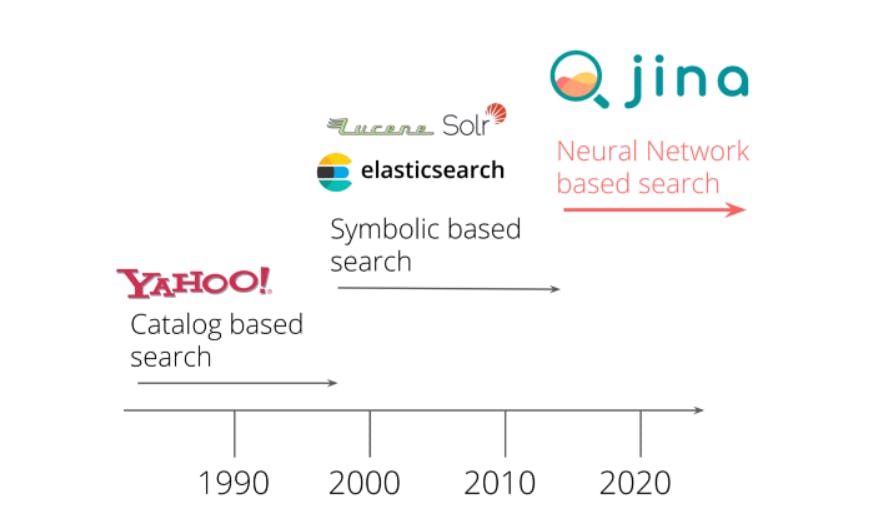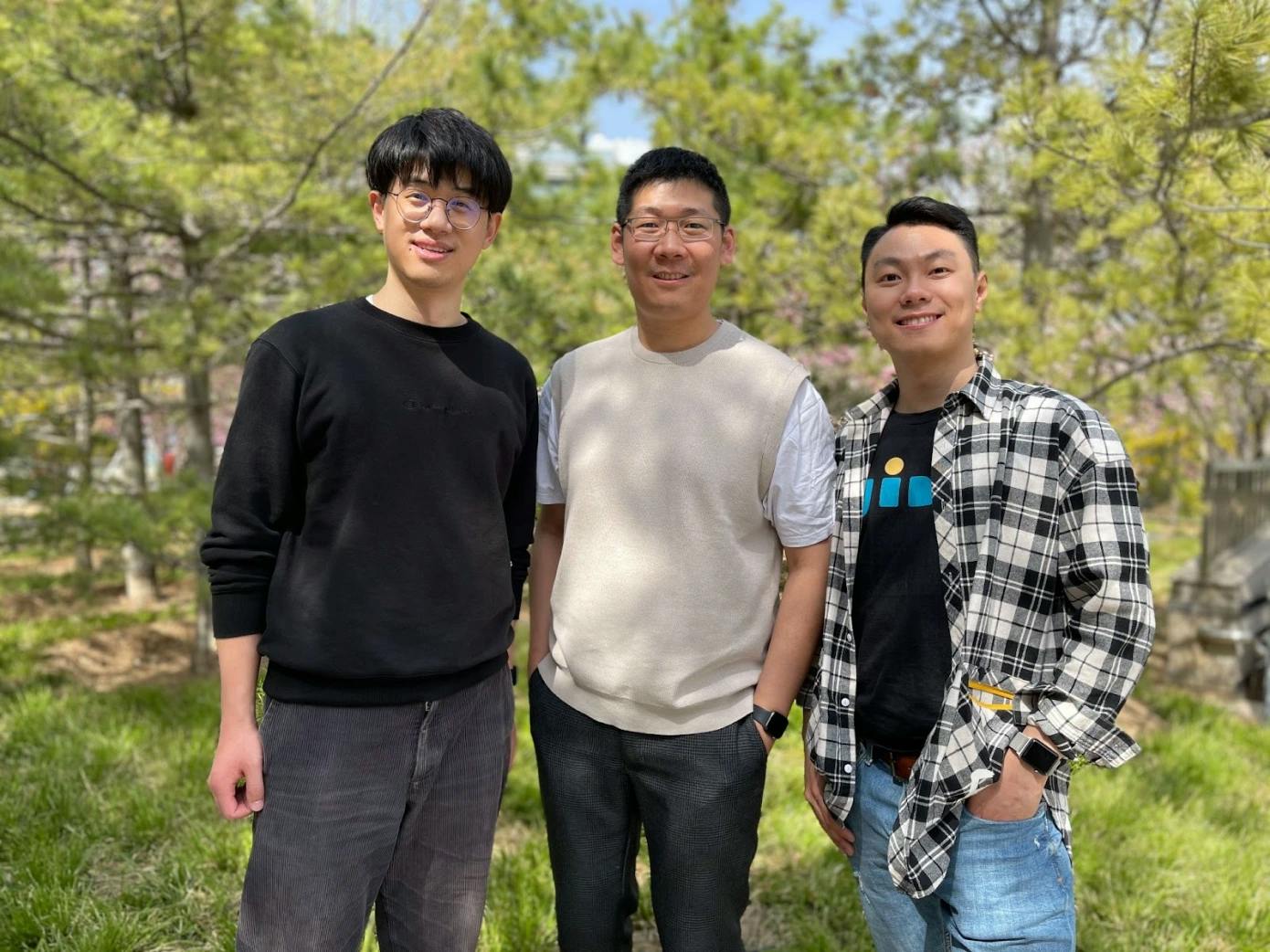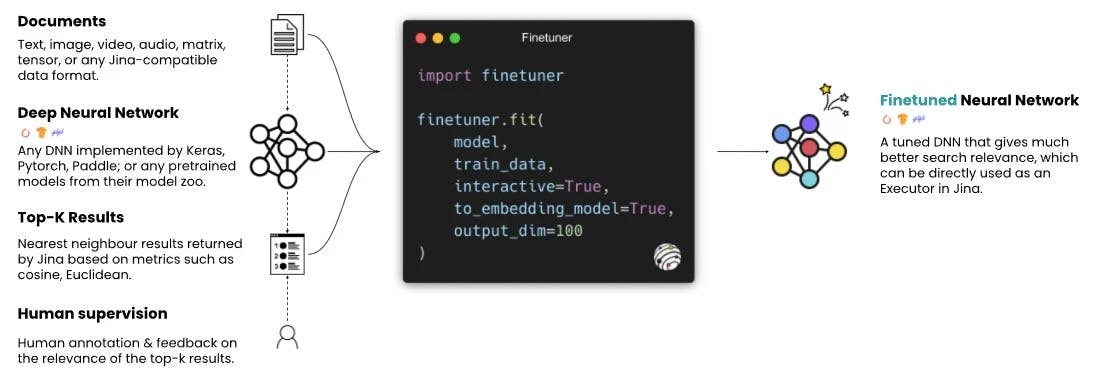“It's going to be interesting to see how society deals with artificial intelligence, but it will definitely be cool.” —Colin Angle
Today, we'll discuss Jina AI Company. Jina AI's plot relies upon the notion of neural search. Now, before we go into what Jina AI performs, let's have a look at the idea of neural search.
Neural Search
In a nutshell, neural search is a novel method of obtaining data. Instead of giving a computer a set of rules to comprehend what data is what, neural search utilizes a pre-trained neural network to achieve the same thing. This saves time and hassles for developers because they don't have to define every single rule, and the system evolves with time. The term "neural search" refers to a novel method of obtaining information that employs neural networks. Writing rules to "analyze" the material being searched and produce the best results was a common practice in traditional search algorithms.
Developers don't have to wrack their brains for these rules using neural search; the system learns them on its own and improves with time. To comprehend what neural search is, we must first learn about Natural Language Processing. NLP is a branch of computer science that focuses on interpreting natural language data, such as everyday conversations. The core of intelligent search is natural language processing, and we've seen three main techniques in this sector.
What is Jina AI?

Jina is a deep learning search framework that helps anybody to quickly deploy SOTA and scalable deep learning discovery applications. The goal is to create an open-source neural search platform for companies and developers that empowers anybody to find information in any type of data with high availability and scalability.
Jina AI is an open-source firm located in Berlin that leverages neural search to assist consumers to identify information in unstructured data (including videos and images). Jina AI recently revealed that they have secured $30 million in a Series A round anchored by Canaan Partners.

The purpose behind neural search, as per Jina.ai CEO and co-founder Han Xiao, who co-founded the firm with Nan Wang and Bing He, is to deploy deep learning neural networks to go much further than standard keyword-based search engines. The company's main Jina framework may let developers easily design search tools for their individual use cases by utilizing comparatively recent machine learning algorithms such as transfer learning and representation learning.

It may run in containers, clod, or on-premises servers. It supports any-to-any search, including text-to-text, image-to-image, video-to-video, and any other data type you may give into the engine. Jina is based on a document, which is its most basic data type. Documents are data fragments in any dataset you wish to search, as well as the input keywords you use to actively search for. In a nutshell, you may put this technique to work on any form of data search or relevance challenge.

Jina intends to define how people construct neural search systems — and become the de facto standard in the process, similar to how TensorFlow or PyTorch defined how people develop AI systems. Jina additionally features the Jina Hub, a marketplace where developers can exchange and uncover building blocks for Jina-based neural search apps, and also the Finetuner, a toolset for fine-tuning any deep neural network.

A video game developer uses Jina AI to auto-fill pertinent game assets in the right-click many of its game editor, as well as a legal-tech business utilizes it to empower its chatbot to give a Q&A experience that pulls on data from PDF documents.
Jina AI Components
A high-level job, such as indexing, searching, or training, is represented by the flow. It comprises a number of pods that are orchestrated to complete a single job. A pod is a collection of executors with similar attributes. It allows numerous executors to run in parallel and provides context and control to the executors. In Jina, an executor symbolizes an algorithmic unit.
Executors can be used to design algorithms such as encoding pictures into vectors, saving vectors on disc, and rating outcomes. Executor provides helpful interfaces that let AI developers and engineers concentrate entirely on the algorithm. The following are some examples of common executors:
Crafter: Crafter has been used to pre-process documents and partition them into parts.
Encoder: The encoder transforms the crafter's incoming pre-processed batch of documents into embedding vectors.
Indexer: The encoded vectors are sent into the indexer, which indexes and saves them in a key-value form.
Ranker: Ranker ranks the data based on a specified ranking and operates on the indexed storage.
Is Jina AI the secret to developing neural search?

The development pace, in my viewpoint, is a critical aspect in the effectiveness of a software project. Jina AI is using the community to get input so that it can evolve quickly. Conventional text-based search methods don't serve in today's world of photos, video, and other content. Jina is revolutionizing businesses from black and white to color by unleashing large amounts of data in a scalable, data-agnostic approach. Primary versions of its open-source architecture potentially hint at what's to come, with neural search underlying chances to enhance decision-making, optimize processes, and perhaps even generate new income streams.

Jina AI, coupled with the increased team, really does have the potential to augment the broader Jina ecosystem and offer additional tools and services, in my belief.
Jina AI Social Media
Thank you for reading my article!

